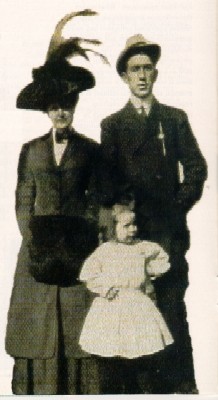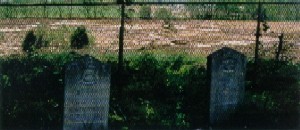Saving the Past
By Mark V. Wetherington
Director
About |
 In 1998, a member of The Filson called to tell us that a historic house near
Shepherdsville was going to be demolished to make way for development. The owners generously offered
The Filson anything we wanted in the attic. What we found was a record of almost two hundred years of
family life in rural Kentucky.
In 1998, a member of The Filson called to tell us that a historic house near
Shepherdsville was going to be demolished to make way for development. The owners generously offered
The Filson anything we wanted in the attic. What we found was a record of almost two hundred years of
family life in rural Kentucky.
Kentucky's soul is firmly rooted in its people's sense of place and identity. It is partly for that reason that comparatively few people leave the commonwealth to live elsewhere. Collectively and individually, the past shapes our sense of place and identity on every level-individual, family, neighborhood, county, state, region, and nation.
For most of its history, Kentucky's people were farmers. The Simmons family of Bullitt County was among them. They settled near Shepherdsville about a generation after the town was established in 1793, not far from where the old Wilderness Road crossed the Salt River. They carved out a farm and built a solid two-story brick house where the family lived for almost two hundred years, each generation storing in their attic items that they could not bring themselves to throw away.
The post-civil War years were ones of tremendous change for Kentucky agriculture, including an even greater importance for livestock in the economy and the emergence of scientific farming. Life on the Simmons farm unfolded within this context during the late 1800s and early 1900s. Letters, ledgers, farm journal entries, and agricultural newspapers found in the attic all reflect the family's interest in improved breeding and effective marketing of the cattle they produced on The Fairview Stock Farm.
The farm's location within hearing distance of the L&N railroad made it easy to ship farm products to market and travel to Louisville for business and pleasure. The Fairview Stock Farm flourished. At the turn of the century the family placed a two-story frame Victorian house in front of the antebellum brick structure, a symbol of their prosperity. William Simmons became president of the People's Bank of Shepherdsville.
 Ironically, the same railroad that made
Mr. and Mrs. Simmons with one of their daughters business ties to Louisville possible also became the source of a personal tragedy that scarred the family's memory for years to come. On December 20, 1917, Carrie May Simmons, William's widow, traveled from Shepherdsville to Louisville on the L&N to buy Christmas gifts. Her gift list included a "Box of pink paper (nice) at Stewards for Joe'' as well as "Something for Miss Stallings and Miss Crucher.'' Ready to return home, she boarded a slower local train packed with Christmas shoppers bound for the smaller stations along the line. It pulled out of the L&N station at 4:35 p.m.
Arriving in Shepherdsville, the local stopped to back onto a siding to let the passengers off. Before it could clear the main track, a behind schedule and faster through train trying to make
up twenty-three minutes between Louisville and Bowling Green slammed into the local's rear-end, splintering its wooden coaches. The wreck killed fifty-one passengers and injured another forty-eight, making it one of the L&N's greatest disasters. Mrs.
Simmons was one of the fatalities.
Ironically, the same railroad that made
Mr. and Mrs. Simmons with one of their daughters business ties to Louisville possible also became the source of a personal tragedy that scarred the family's memory for years to come. On December 20, 1917, Carrie May Simmons, William's widow, traveled from Shepherdsville to Louisville on the L&N to buy Christmas gifts. Her gift list included a "Box of pink paper (nice) at Stewards for Joe'' as well as "Something for Miss Stallings and Miss Crucher.'' Ready to return home, she boarded a slower local train packed with Christmas shoppers bound for the smaller stations along the line. It pulled out of the L&N station at 4:35 p.m.
Arriving in Shepherdsville, the local stopped to back onto a siding to let the passengers off. Before it could clear the main track, a behind schedule and faster through train trying to make
up twenty-three minutes between Louisville and Bowling Green slammed into the local's rear-end, splintering its wooden coaches. The wreck killed fifty-one passengers and injured another forty-eight, making it one of the L&N's greatest disasters. Mrs.
Simmons was one of the fatalities.
Three years after the Shepherdsville train wreck the number of farms in the commonwealth peaked at 270,000. But the Great Depression, World War II, and the continued migration from rural to urban areas left fewer and fewer people in the countryside. By 1990, there were only 93,000 farms in Kentucky. Like most of the nation, Kentucky's population increasingly moved from rural areas into cities and towns, leaving behind a countryside of abandoned farmhouses.
The Simmons family's experience is important not because it is unique, but because it reflects the tremendous twentieth-century change that transformed rural Kentucky, particularly since World War II. During the last four generations, the proportion of the commonwealth's labor force working on farms dropped from more than two-thirds to well under one-tenth. The Simmons family farm now joins this transformation, the demolition of the house and outbuildings reflecting much larger changes in the state's agricultural landscape.
What does make the family's experience unique, however, is our ability to tell their story based upon the items we found tucked away in boxes and trunks in their attic. Because the family saved their past, we will have a greater understanding of their history, as well as the changes that reshaped rural Kentucky and our own personal past, long after their farm is gone.
Found in the Attic:
-
Letters
-
Farm Journal Entries
-
Ledgers
-
Photographs
-
Ephemera (Business Cards, Etc.)
-
Mrs. Simmons's Purse and Christmas List
-
A Family Crazy Quilt
-
Bullitt County Fair Programs, ca. 1900
-
Agri-Business Advertisements
-
Agricultural and Temperance Newspapers
The Filson Historical Society
1310 South Third Street - Louisville, KY
40208
Phone: (502) 635-5083 Fax: (502) 635-5086
Hours
The Ferguson Mansion and Office
Monday - Friday: 9 am. - 5 pm.
Saturday and Sunday closed
Library
Monday - Friday: 9 am. - 5 pm.
Saturday: 9 am. - 12 noon
